Byzantine Art
1/31
There's no tags or description
Looks like no tags are added yet.
Name | Mastery | Learn | Test | Matching | Spaced |
|---|
No study sessions yet.
32 Terms
Timespan of the Dark Ages
1000 years
(circa 500-1450 AD)
Alternative names for the Dark Ages
Middle Ages
Medieval Times
Reason for the name Dark Ages
large government control ended without a true successor; instead local communities became self-sustaining. Everyone had it hard.
Purpose of art in the Dark Ages
It should be understandable then that painting, art and architecture during this period became subservient to the church.
Artisans were employed to help illiterate souls understand church doctrine and build sanctuaries that awed parishioners by raising their spirits about the grandeur of heaven.
Art from the Middle Ages is divided into three categories:
Byzantine
Romanesque
Gothic
Byzantine art refers more to a period of art from
330 AD (when Constantine moved the Roman capital to Constantinople) to 1453(when the Ottoman Turks conquered the city)
Byzantine art is the combination of
early Christian art themes with Roman, Greek and Oriental influences
Characteristics of Byzantine art
Byzantine art had no interest in perspective or volume so human figures are flat, almond shaped, faces with big eyes starring straight ahead, stiff, and symmetrically placed seeming to float in space
They focused more on the message of the painting rather than the painting itself
Characteristics of Byzantine Art:
3 Fs- Flat, Frontal, Floating
G- Gold
Mosaics
Roman floor mosaics are made with tesserae (small tiles).
Byzantine mosaics are much larger tiles.
Byzantine mosaics are colored small glass cubes used to decorate church walls and ceilings. The surface was left uneven so it would sparkle.
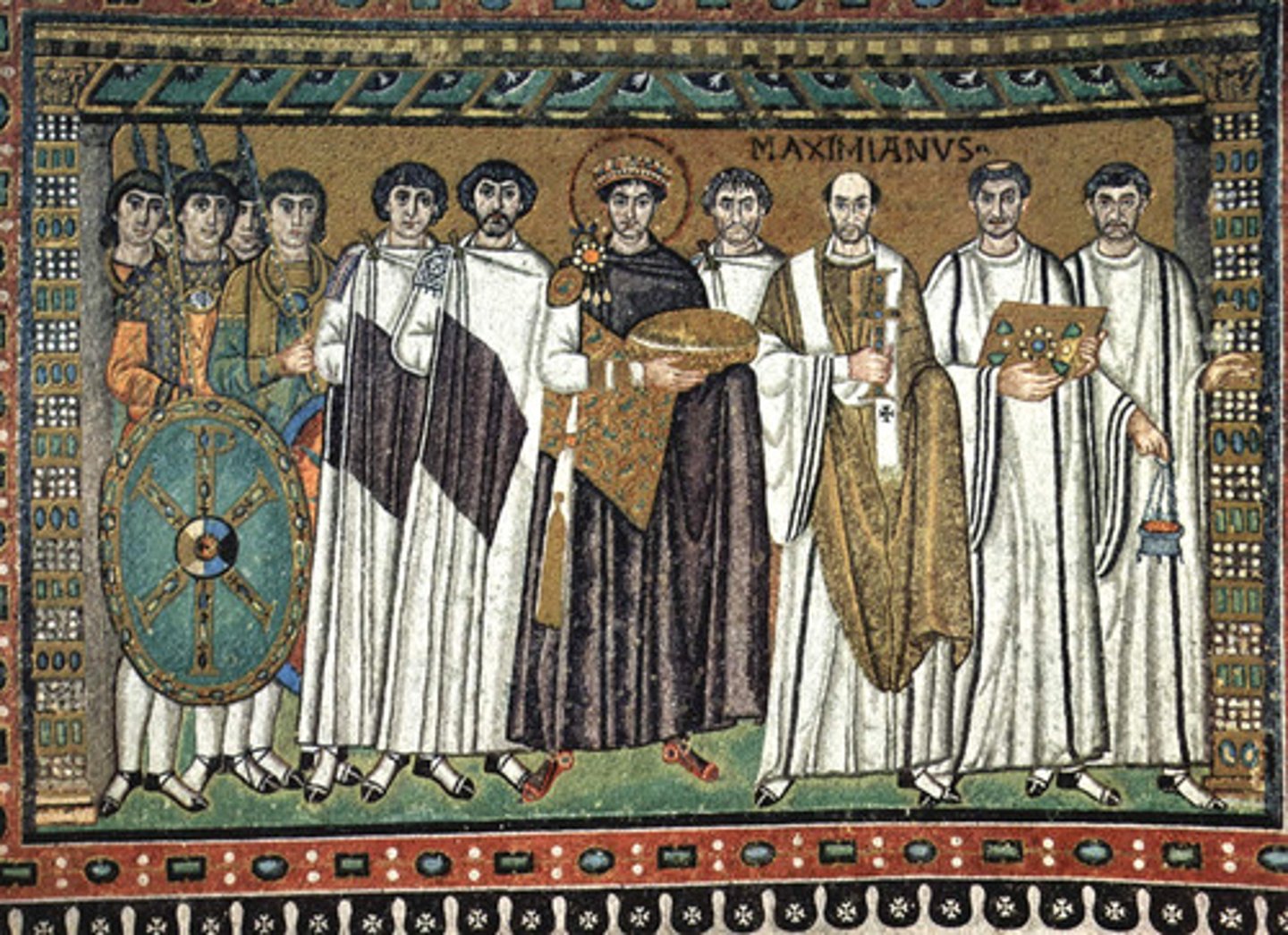
Iconoclast
(people who felt negatively about painting and mosaics of Christ, Mary or the Apostles)
believed the mosaics were idols and demanded that they be removed from churches.
Who banned mosaic usage
Emperor Leo III
from 730 AD to 843 AD
Manuscript illumination
done in a scriptorium where an artist illustrated sacred scenes, or created new Chapter headings
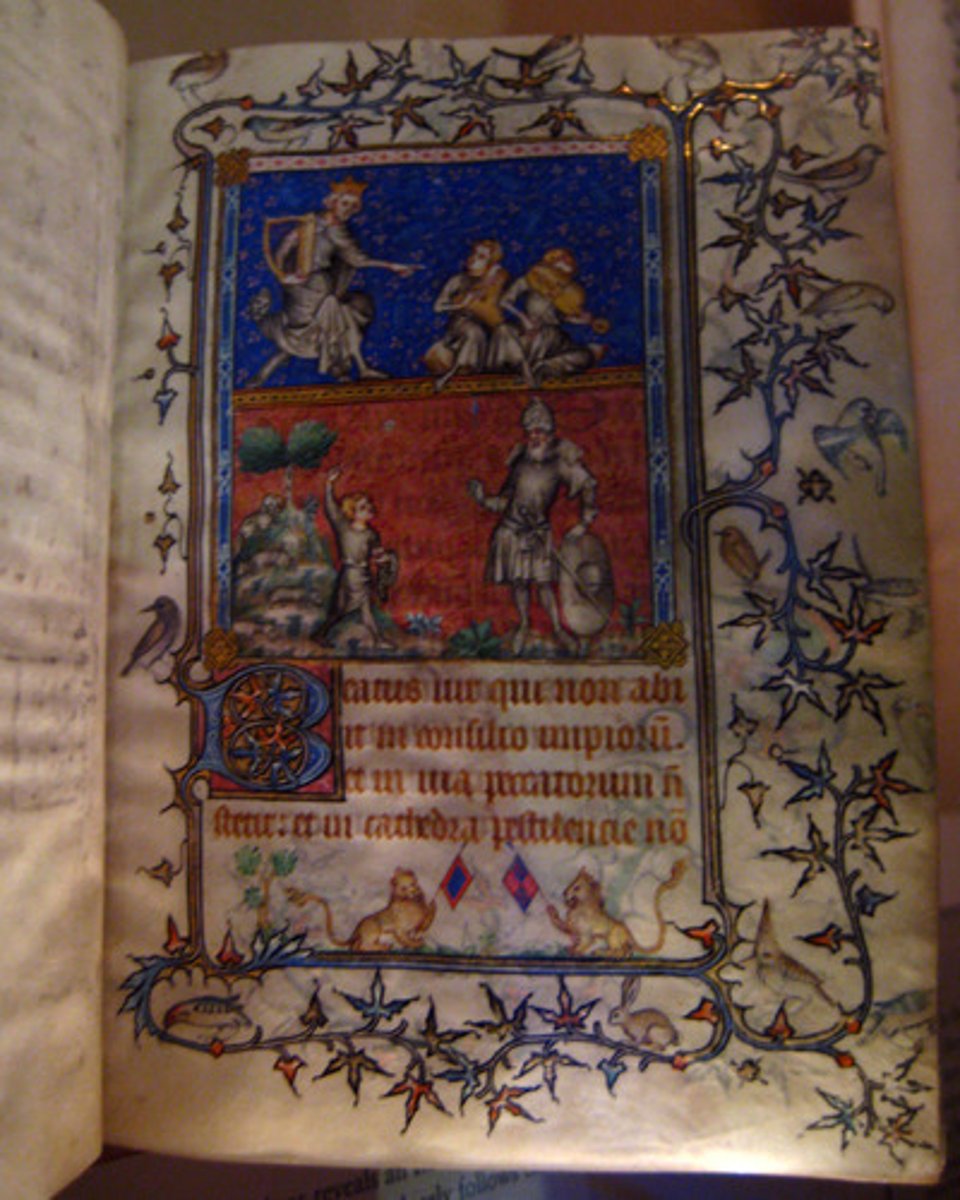
Constantinople's literature preserved what?
classical tradition
Culturally, Byzantium was more Hellenes than Latin (since the Hellenistic cities of Alexandria, Antioch, and Athens were within its empire) and its dominant language was Greek.
As such they held a natural affinity for the Greek classics - and worked to preserve texts like Homer, Aristophanes, Thucydides, Plato and Aristotle, to name a few.
Hagiographies
biographies of saints and religious figures
The majority of Byzantine literature
Hagiographies
Theological works
Ancient papyrus scrolls were replaced with what
vellum (calfskin) or parchment (lamb skin)
Fall of Constantinople
1453 (by the Ottoman Turks)
Sculpture works were influenced by
Roman style, then Oriental style, followed by a Greek style
Byzantine sculptures worked with a new medium
ivory
Early common forms of sculpture
Diptych (a painting or carving that has three side by side panels)
Triptych (a painting or carving that has two side by side panels)
Harbaville Triptych
the most beautiful Byzantine ivory
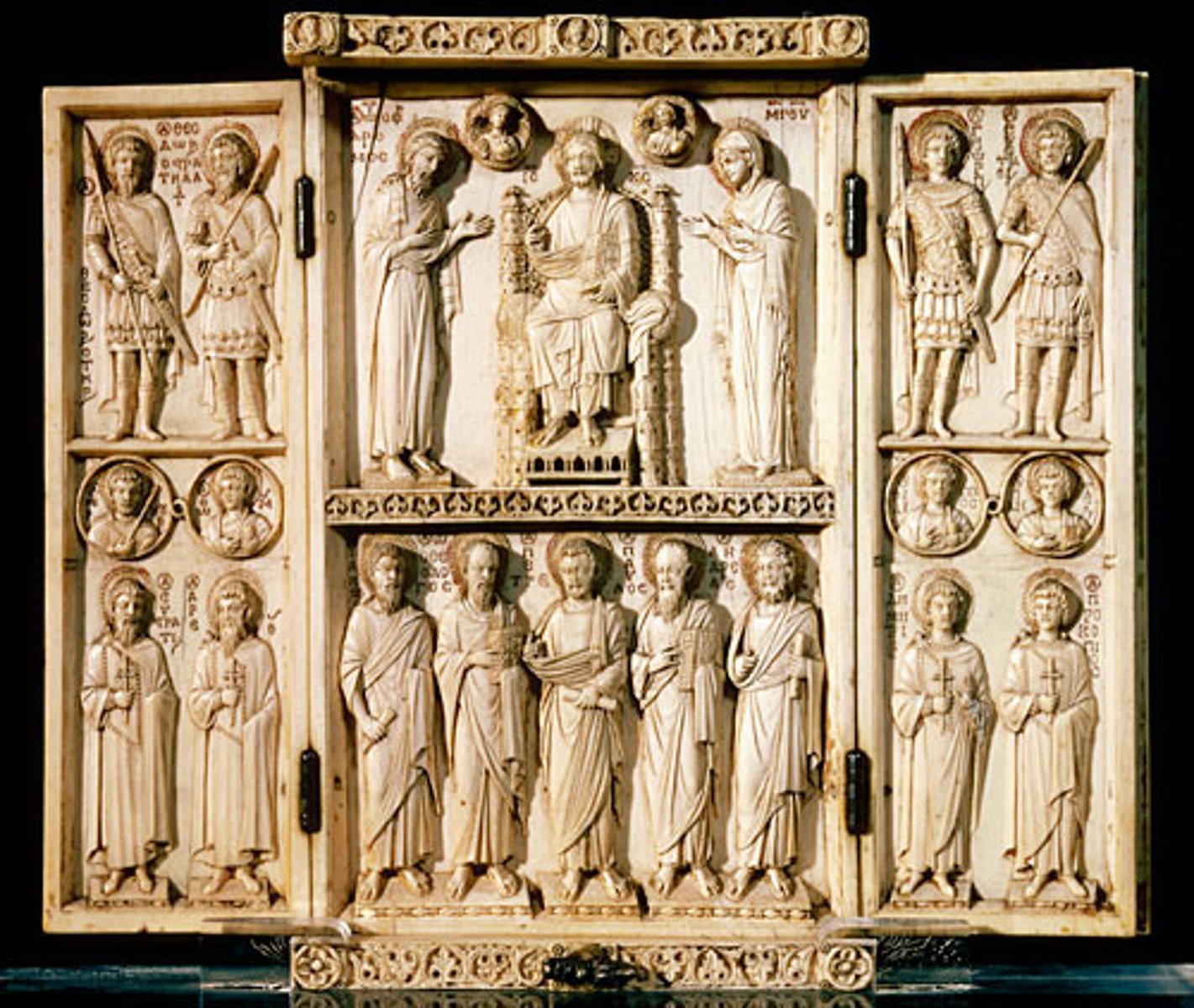
Barberini ivory
has five separate pieces. The center shows an emperor on horseback. To the left a consul in military costume, and above shows Christ with two attending angels, the one below shows a Gothic and Indian emissary
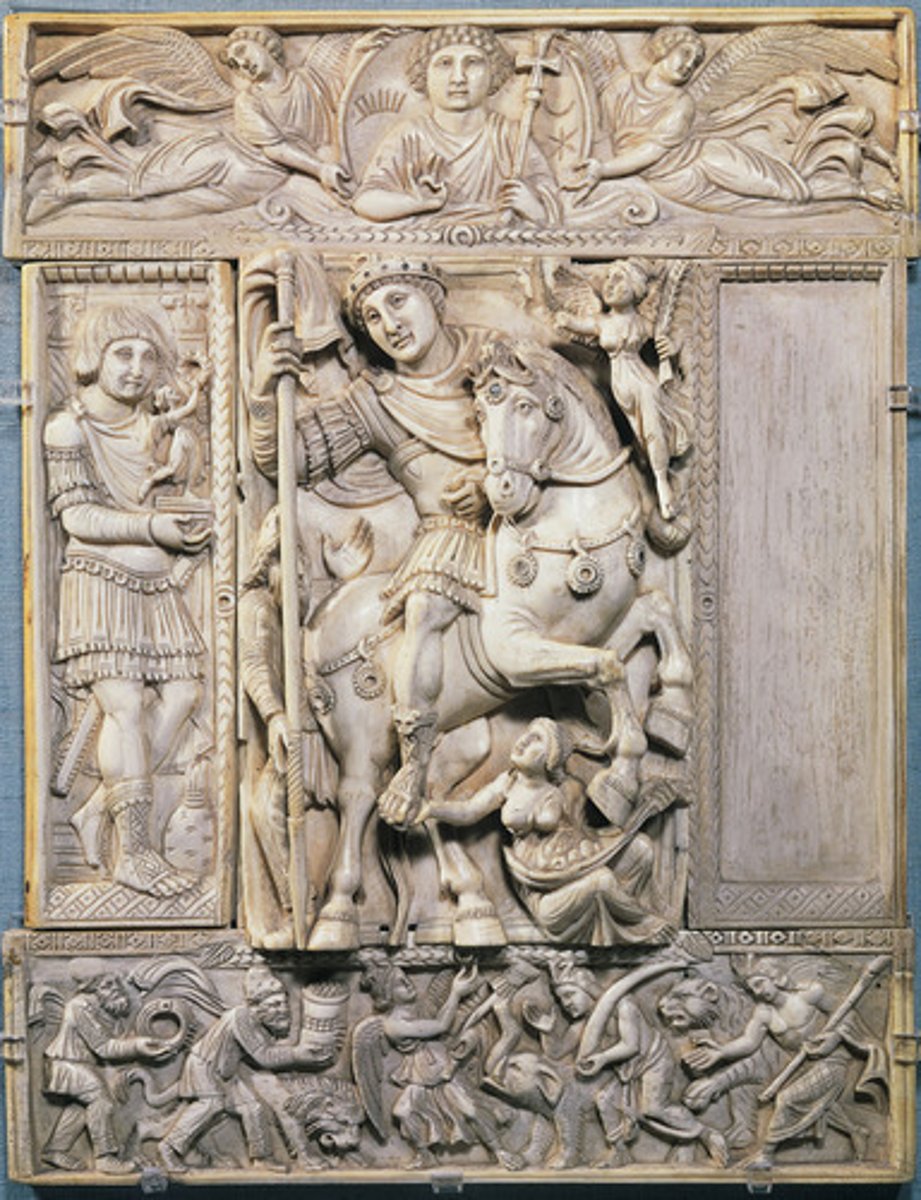
Justinian
a man of humble birth, aspired greatness. His ambitions launched his career that propelled him to become emperor.
Following Constantine's example, he acted both as emperor and pope. He attempted for twenty years to reunite the decayed Roman Empire under his leadership.
He simplified Roman law (renamed the Justinian Code) and built churches throughout the empire.
His architectural motif was a centrally planned, elevated dome. Two for us to consider:
San Vitale Ravenna, Italy
Hagia Sophia Constantinople, Turkey
The San Vitale was built upon whom's territory
Ostrogoth territory
(Ravenna, Italy)
San Vitale
Externally this small church is an architectural blended concoction of rectangles and circles that reaches toward an octagonal dome.
Interior Mosaics of Justinian and his wife, Theodora, appear throughout the church.
They follow the Byzantine model of crowded mosaics and are filled with symbolism.
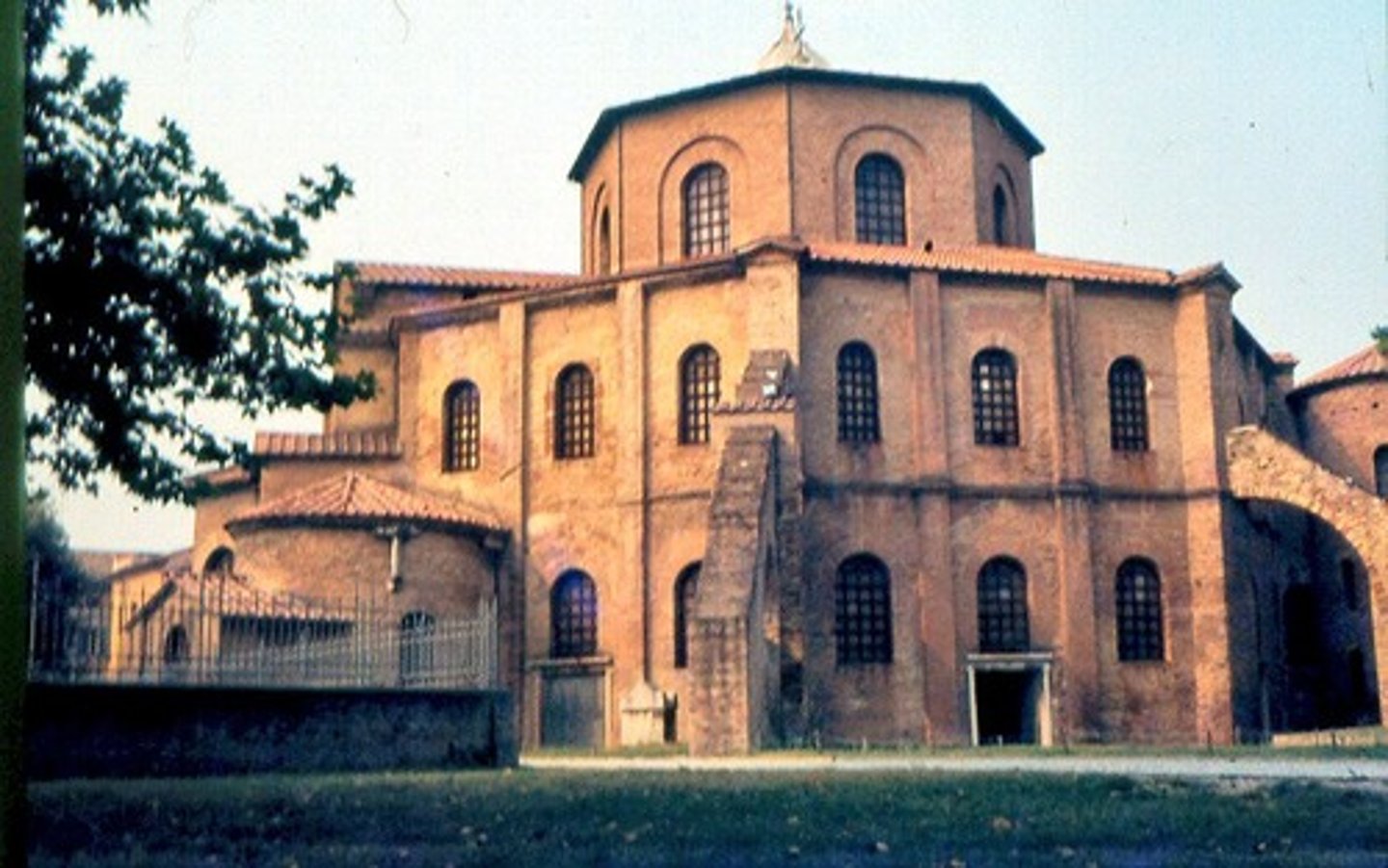
Hagia Sophia
The greatest Byzantine architectural accomplishment and the largest church of the Middle Ages
To replace the original basilica, Justinian chose two mathematicians, Anthemius and Isodorus, to make it as grand as his empire which they accomplished in only five years.
Four minarets were later built to call people to worship of the Muslim faith ( the name Hagia Sophia means Holy Wisdom)
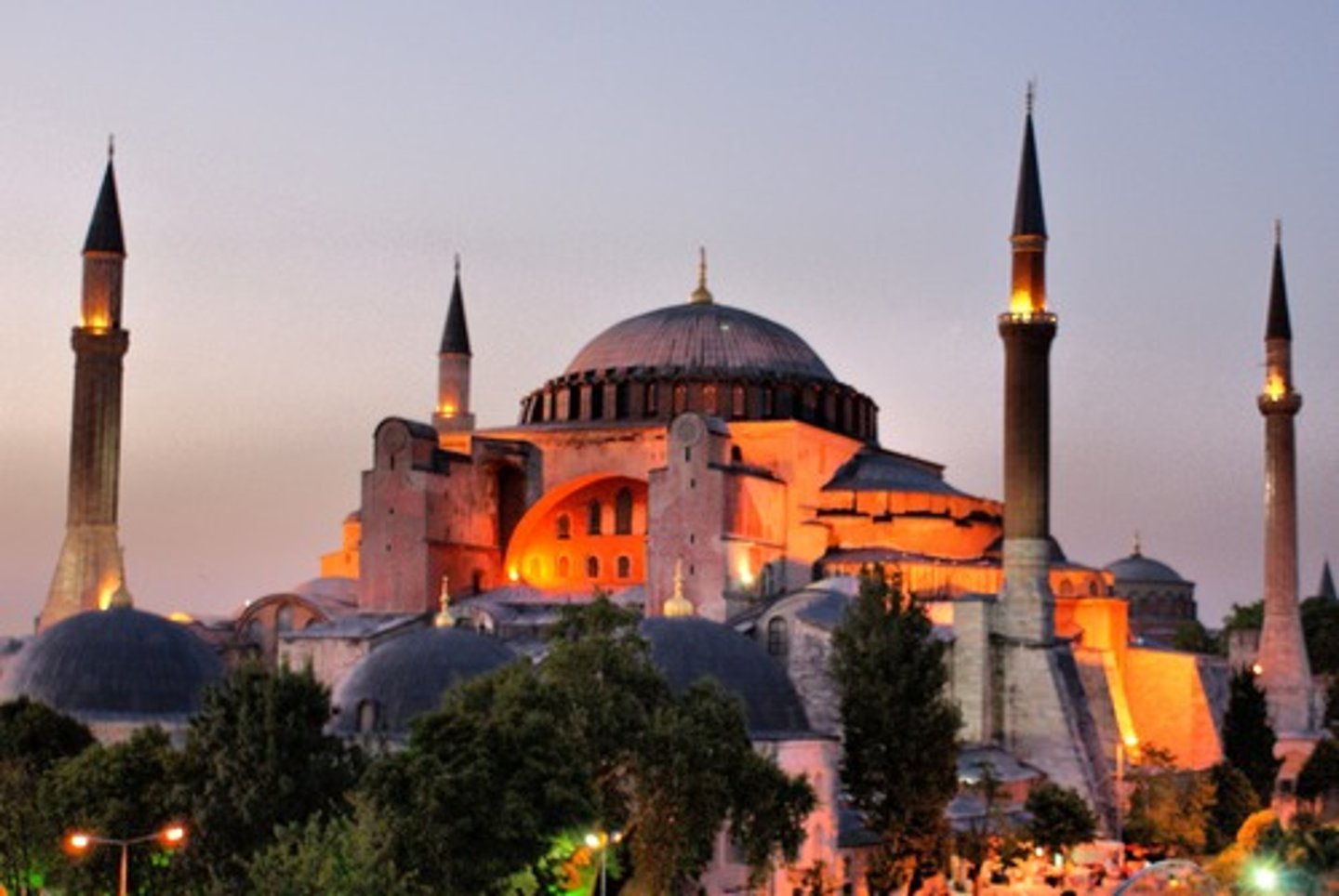
Diameters of the Hagia Sophia
The central dome is 108 feet in diameter and rises 180 feet above the floor.
Hagia Sophia rests on a new Byzantine technique
pendentive ( four arches forming a square)
Above the pendentive are
40 arched windows that flood the floor plan with light and provide the illusion of a halo.
557 AD
Rapid construction succumbed to two earthquakes in 557 AD causing a partial dome collapse.
Later history of the Hagia Sophia
When Constantinople fell, the Ottoman Turks converted the, sanctuary into a mosque and had many of the mosaics plastered (which actually preserving them).
Restoration began in 1929 when the building was declared a museum.